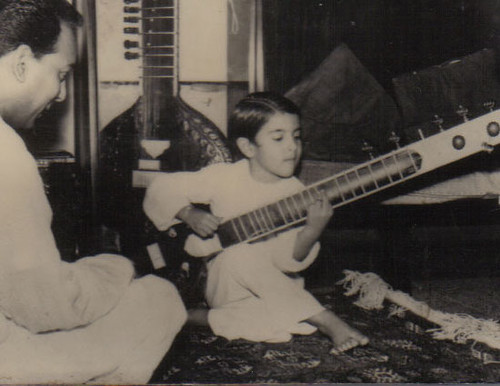
Hence, instead of trying to differentiate every section, it makes better sense to listen for the repeated short melodic figures as well as greater overall patterns. Some of the short melodic-rhythmic patterns that recur have a settling dotted figure and octave jumps. As for bigger patterns, the jo-ha-kyu construction could be employed to the piece as a whole. The first two dan constitute the introductory section or the jo; the 2nd two dan determine the tempo increasing, as in a ha section; then the tempo gains its height in the final two dan, or the kyu section. The pace slows down just toward the end, in the last 22 beats or so, finishing in a long glissando. This figure is also observed in individual dan, in which one can also feel a gradual building up of tension.
In listening to this courtly piece, we hear from the start four beats of "introduction" a long note of 2 beats followed by a coming down note a 4th away, then an interval of a 5th (ex. 8-4). This figure is easily heard throughout the piece. The accompanying beat of silence makes up the first beat of the material doubled in each dan.
A deliberate listener can hear an assortment of timbres and engaging tonal effects. Occasionally the pick of one finger slithering down the string creates a pitchless sound; sometimes glissandos sweep the strings. There might be changes in pitch that sound almost like a sliding from a note to the next and then back again. This is an effect of altering the pressure maintained in the left hand on the string when the right hand plucks it. Such soft shifting of pitch and tone color afford koto music a particular beauty.








